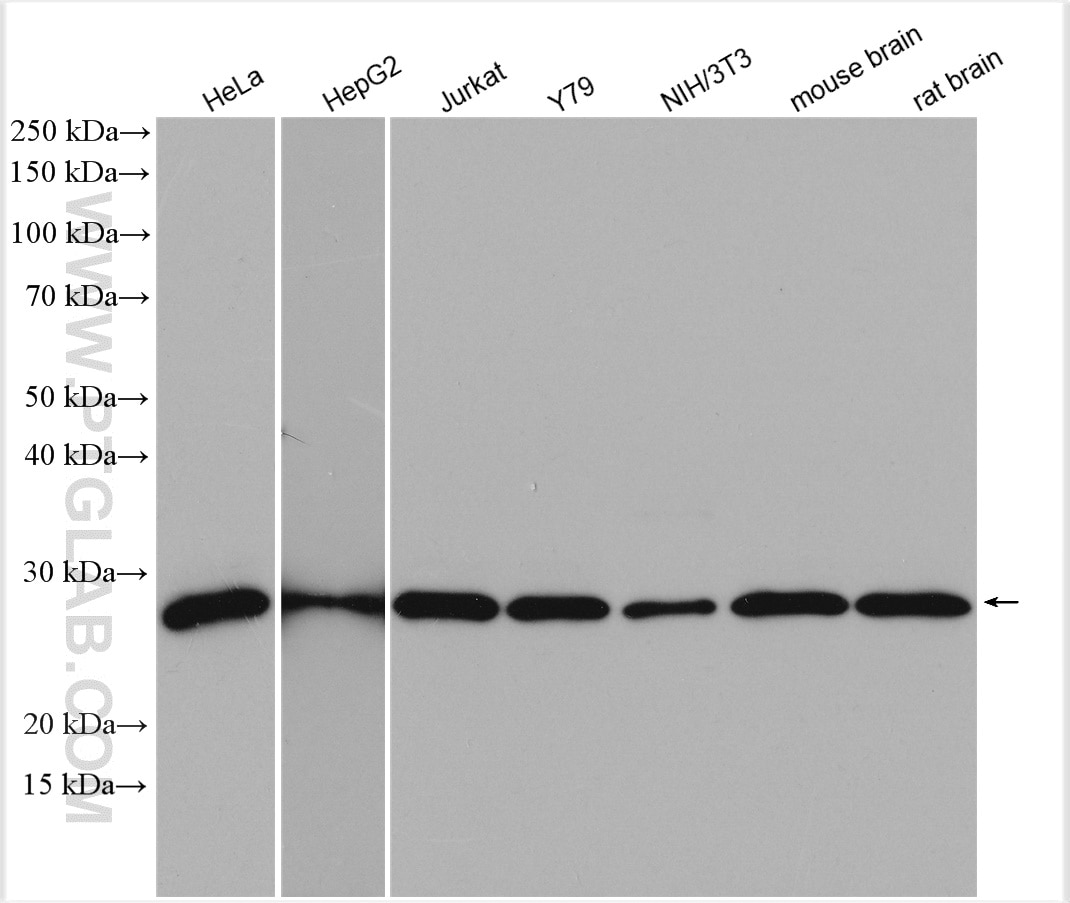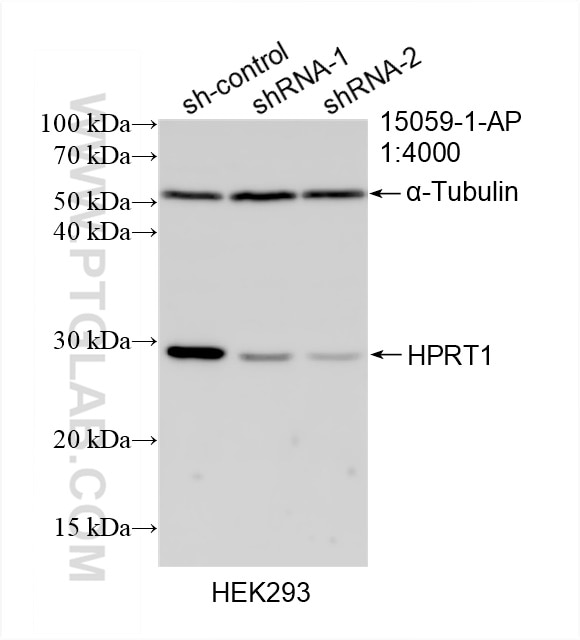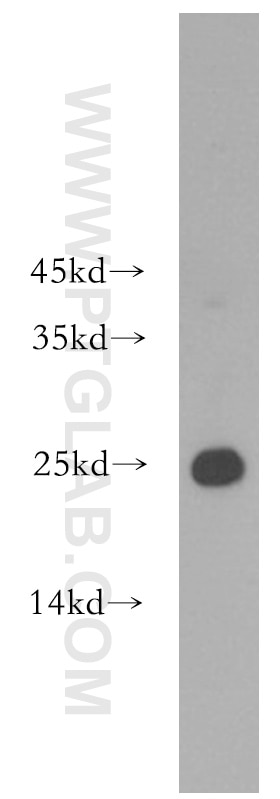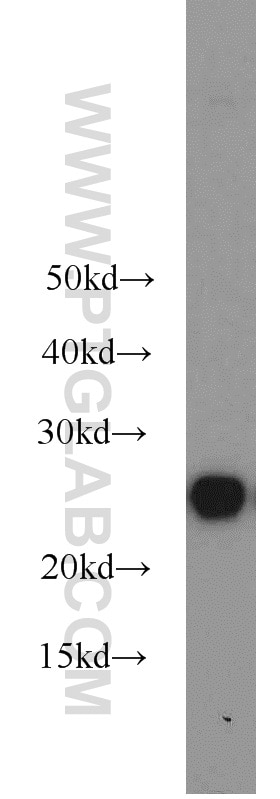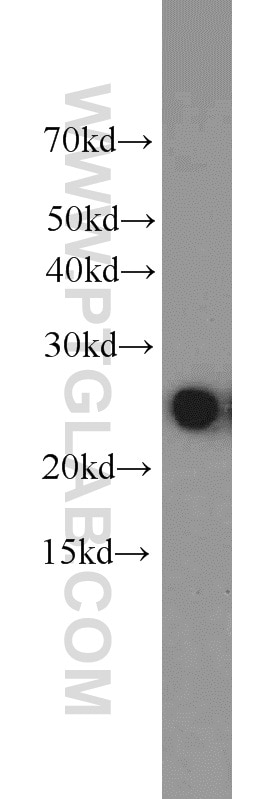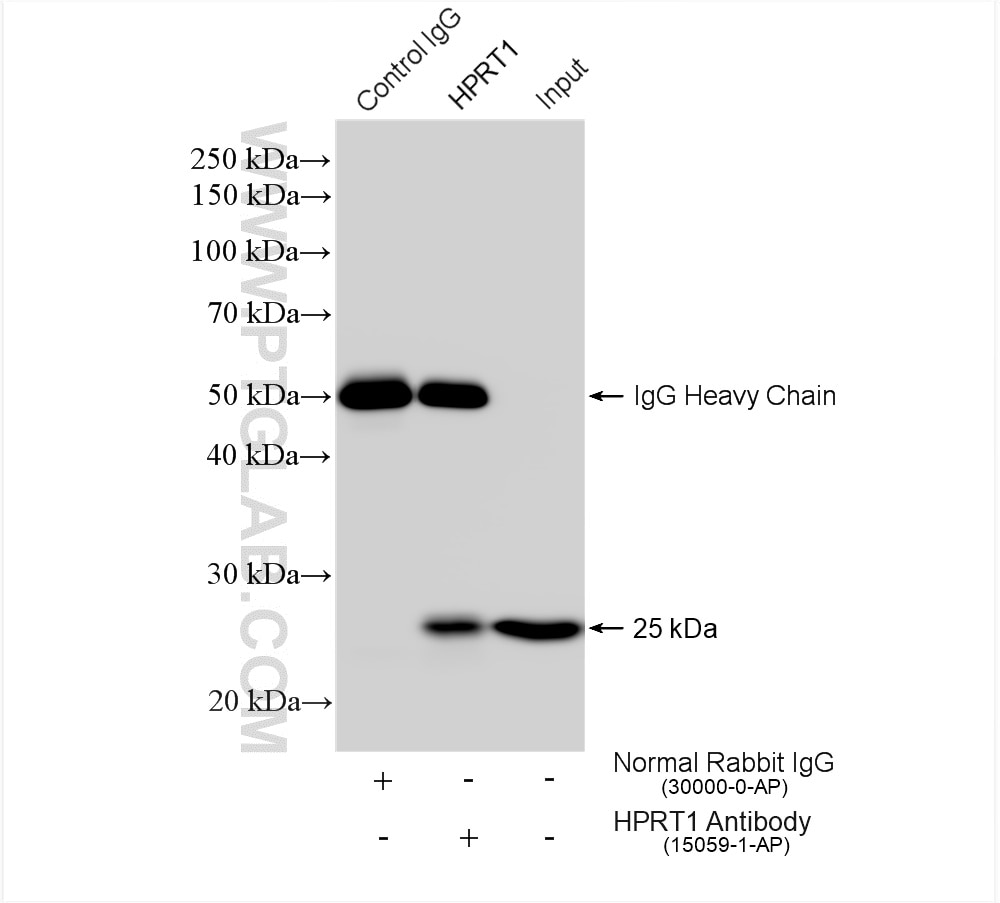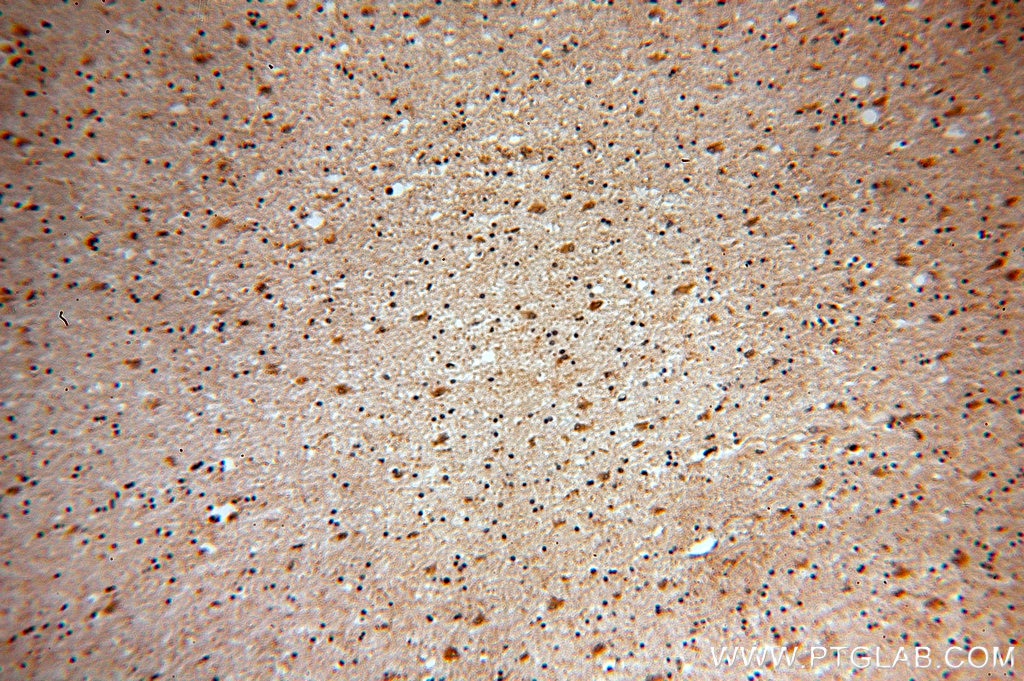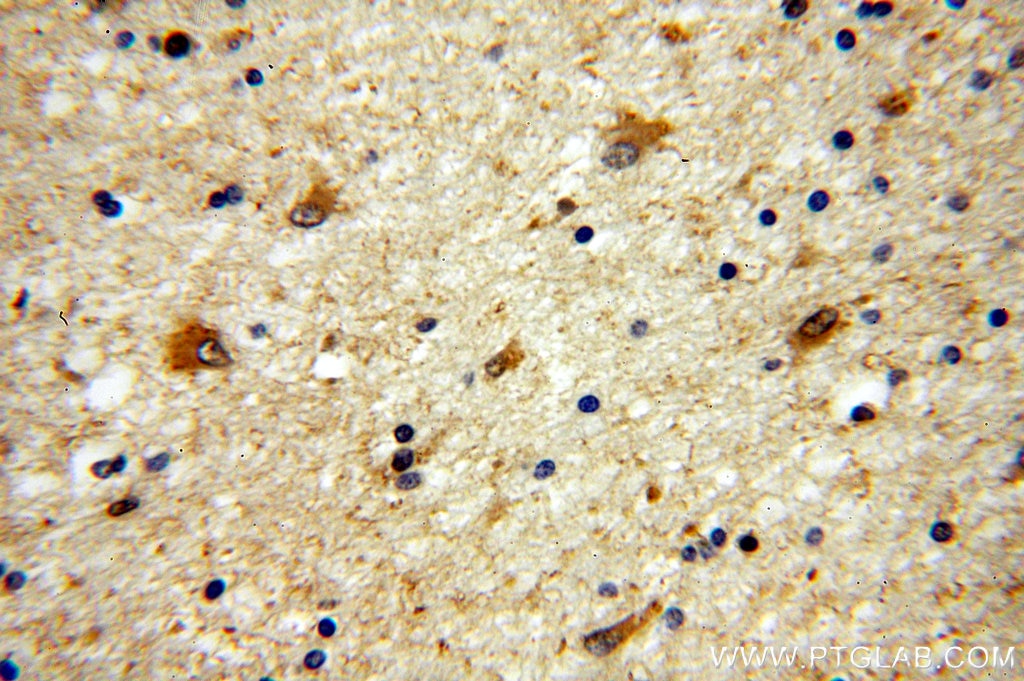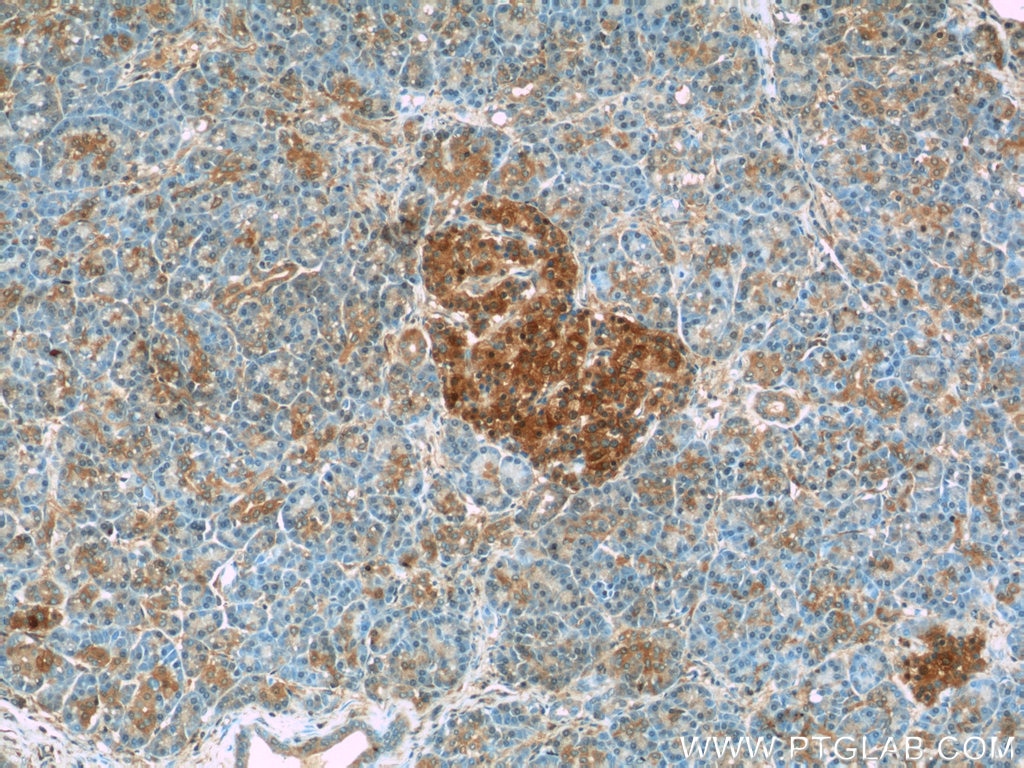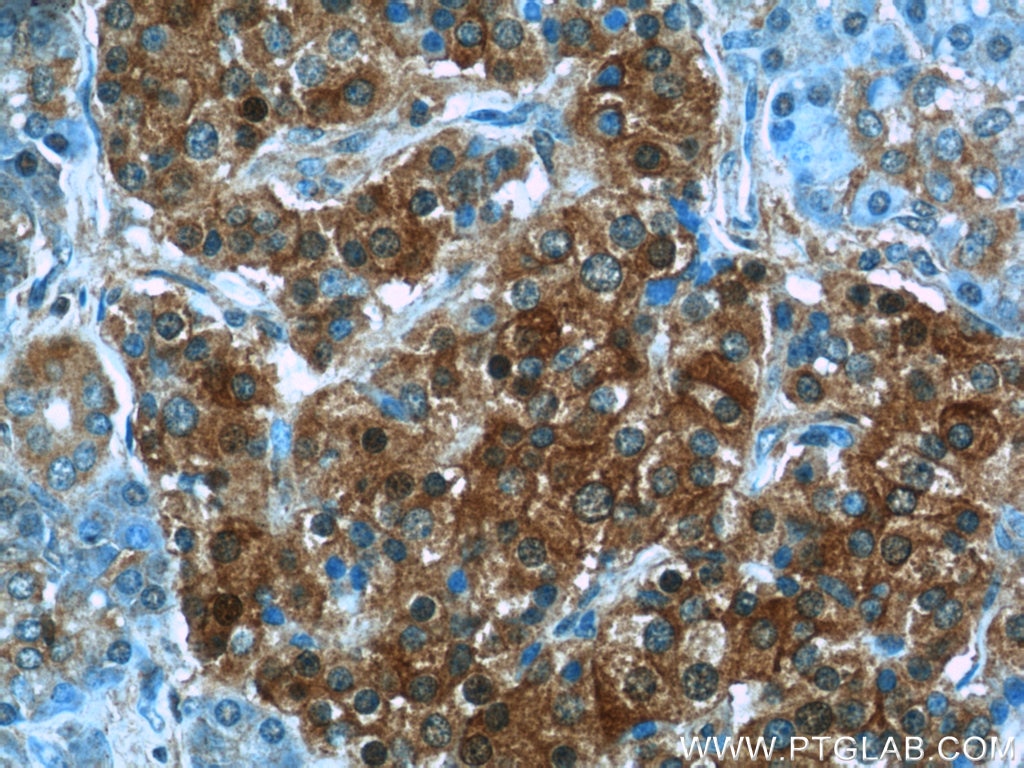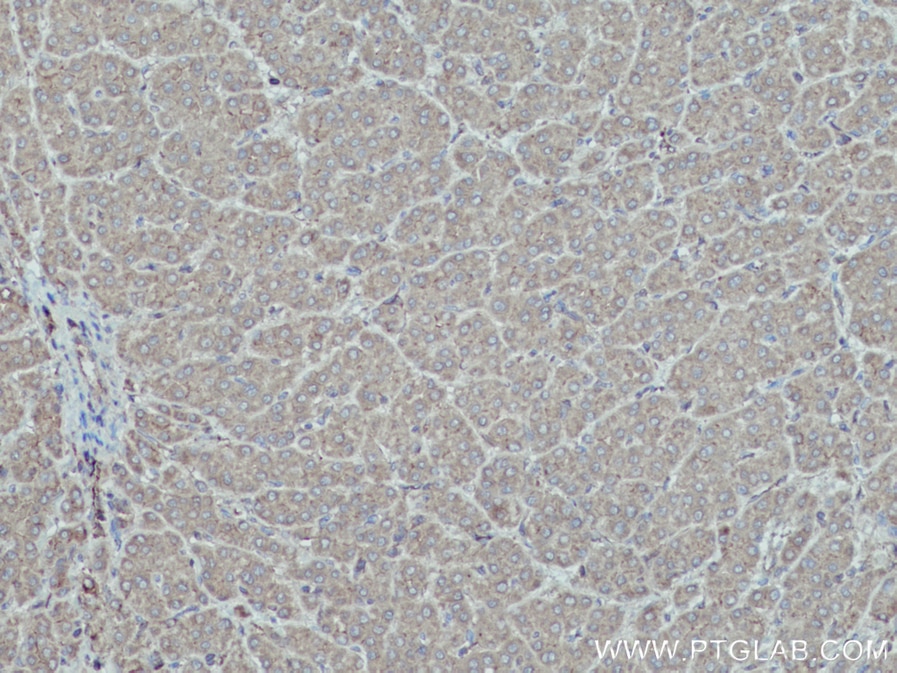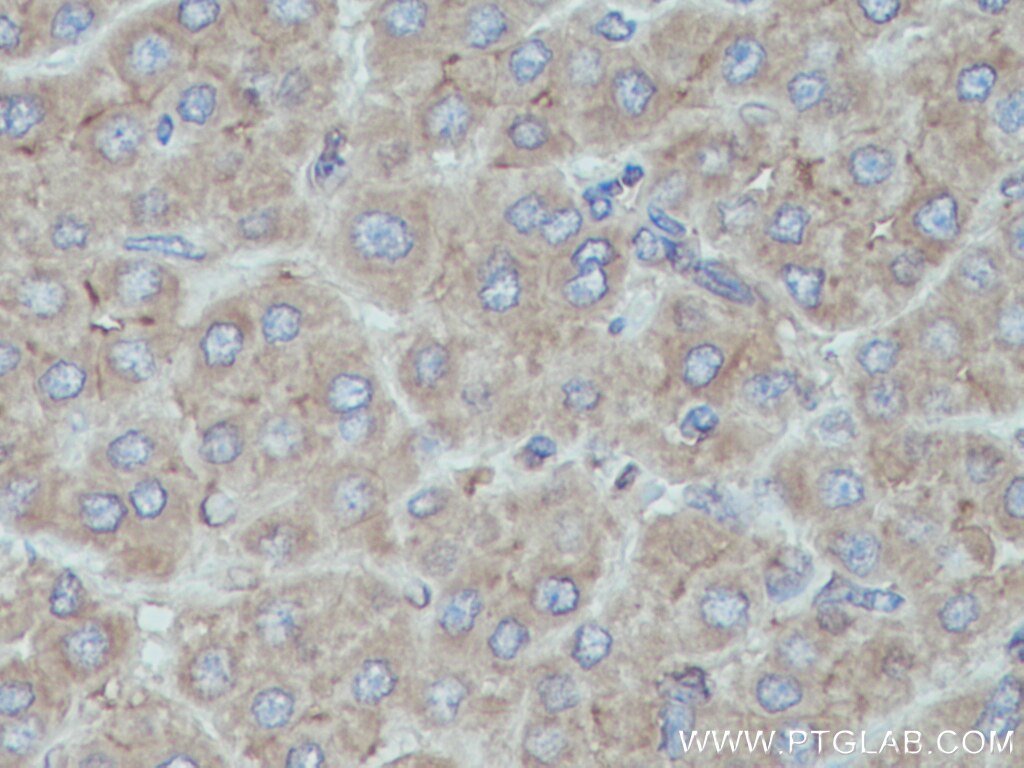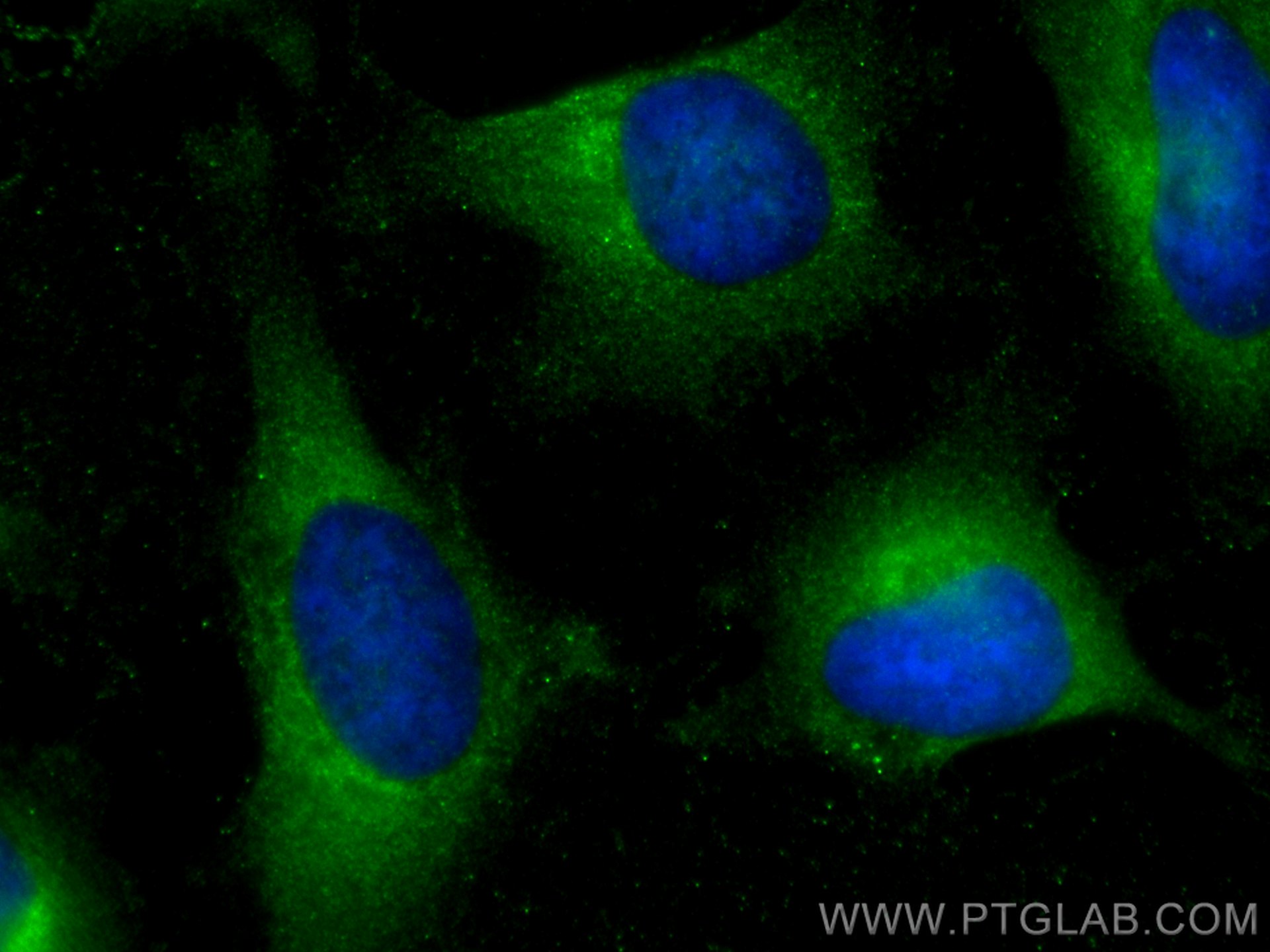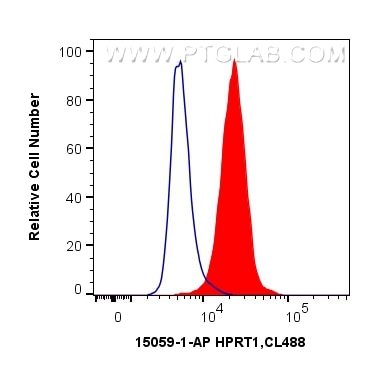- Phare
- Validé par KD/KO
Anticorps Polyclonal de lapin anti-HPRT1
HPRT1 Polyclonal Antibody for WB, IP, IHC, ELISA, IF/ICC, FC (Intra)
Hôte / Isotype
Lapin / IgG
Réactivité testée
Humain, rat, souris
Applications
WB, IP, IHC, ELISA, IF/ICC, FC (Intra)
Conjugaison
Non conjugué
N° de cat : 15059-1-AP
Synonymes
Galerie de données de validation
Applications testées
| Résultats positifs en WB | cellules HeLa, cellules A549, cellules HEK-293, cellules HepG2, cellules Jurkat, cellules MCF-7, cellules NIH/3T3, cellules Y79, tissu cérébral de rat, tissu cérébral de souris, tissu hépatique de souris |
| Résultats positifs en IP | tissu cérébral de souris, |
| Résultats positifs en IHC | tissu cérébral humain, tissu de cancer du foie humain, tissu pancréatique humain il est suggéré de démasquer l'antigène avec un tampon de TE buffer pH 9.0; (*) À défaut, 'le démasquage de l'antigène peut être 'effectué avec un tampon citrate pH 6,0. |
| Résultats positifs en IF/ICC | cellules HeLa, |
| Résultats positifs en FC (Intra) | cellules HeLa, |
Dilution recommandée
| Application | Dilution |
|---|---|
| Western Blot (WB) | WB : 1:2000-1:10000 |
| Immunoprécipitation (IP) | IP : 0.5-4.0 ug for 1.0-3.0 mg of total protein lysate |
| Immunohistochimie (IHC) | IHC : 1:20-1:200 |
| Immunofluorescence (IF)/ICC | IF/ICC : 1:200-1:800 |
| Flow Cytometry (FC) (INTRA) | FC (INTRA) : 0.40 ug per 10^6 cells in a 100 µl suspension |
| It is recommended that this reagent should be titrated in each testing system to obtain optimal results. | |
| Sample-dependent, check data in validation data gallery | |
Applications publiées
| KD/KO | See 4 publications below |
| WB | See 27 publications below |
| IHC | See 2 publications below |
| IF | See 2 publications below |
Informations sur le produit
15059-1-AP cible HPRT1 dans les applications de WB, IP, IHC, ELISA, IF/ICC, FC (Intra) et montre une réactivité avec des échantillons Humain, rat, souris
| Réactivité | Humain, rat, souris |
| Réactivité citée | rat, Humain, souris |
| Hôte / Isotype | Lapin / IgG |
| Clonalité | Polyclonal |
| Type | Anticorps |
| Immunogène | HPRT1 Protéine recombinante Ag7044 |
| Nom complet | hypoxanthine phosphoribosyltransferase 1 |
| Masse moléculaire calculée | 25 kDa |
| Poids moléculaire observé | 24-28 kDa |
| Numéro d’acquisition GenBank | BC000578 |
| Symbole du gène | HPRT1 |
| Identification du gène (NCBI) | 3251 |
| Conjugaison | Non conjugué |
| Forme | Liquide |
| Méthode de purification | Purification par affinité contre l'antigène |
| Tampon de stockage | PBS avec azoture de sodium à 0,02 % et glycérol à 50 % pH 7,3 |
| Conditions de stockage | Stocker à -20°C. Stable pendant un an après l'expédition. L'aliquotage n'est pas nécessaire pour le stockage à -20oC Les 20ul contiennent 0,1% de BSA. |
Informations générales
HPRT1, also named HGPRT, plays a central role in the generation of purine nucleotides through the purine salvage pathway. Mutation of HPRT1 is associated with Lesch-Nyhan syndrome (LNS) which is an X-linked inherited neurogenetic disorder of purine metabolism. It has been reported that HPRT1 also plays an important role in HPRT-related gout.
Protocole
| Product Specific Protocols | |
|---|---|
| WB protocol for HPRT1 antibody 15059-1-AP | Download protocol |
| IHC protocol for HPRT1 antibody 15059-1-AP | Download protocol |
| IF protocol for HPRT1 antibody 15059-1-AP | Download protocol |
| IP protocol for HPRT1 antibody 15059-1-AP | Download protocol |
| FC protocol for HPRT1 antibody 15059-1-AP | Download protocol |
| Standard Protocols | |
|---|---|
| Click here to view our Standard Protocols |
Publications
| Species | Application | Title |
|---|---|---|
J Clin Invest Sirtuin 2 regulates cellular iron homeostasis via deacetylation of transcription factor NRF2. | ||
J Clin Invest ZFP36L2 suppresses mTORc1 through a P53-dependent pathway to prevent peri-partum cardiomyopathy in mice. | ||
Cell Rep Mitochondrial dynamics define muscle fiber type by modulating cellular metabolic pathways | ||
Br J Cancer Blocking of oestrogen signals improves anti-tumour effect regardless of oestrogen receptor alpha expression in cancer cells | ||
EMBO Rep MYC promotes cancer progression by modulating m6 A modifications to suppress target gene translation. | ||
Elife Aging is associated with increased brain iron through cortex-derived hepcidin expression. |
